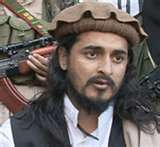 As President Obama continues to weigh his options for a way ahead in Afghanistan, most of the media has focused on comparing the various courses of action (COAs) based on the number of US troops that would be committed. While force structure is a key element to any strategy, this largely misses the point. The real question is: What will these troops be doing? What is their desired endstate? Assuming that we follow the guidelines for COIN articulated in FM 3-24, a critical line of operation will be establishing and legitimizing governance – at the local, district, provincial, and national levels.
As President Obama continues to weigh his options for a way ahead in Afghanistan, most of the media has focused on comparing the various courses of action (COAs) based on the number of US troops that would be committed. While force structure is a key element to any strategy, this largely misses the point. The real question is: What will these troops be doing? What is their desired endstate? Assuming that we follow the guidelines for COIN articulated in FM 3-24, a critical line of operation will be establishing and legitimizing governance – at the local, district, provincial, and national levels.The NY Times reports this morning that LTG(R) Karl Eikenberry, Obama’s ambassador to Afghanistan, has expressed his concerns about sending additional troops due to his assessment that Karzai’s government is unable/unwilling to clamp down on corruption and will be unable to produce visible improvements in governance (see full article here). While additional troops would clearly help in the effort to improve security, it will be impossible to make enduring improvements in Afghanistan without a parallel effort to improve governance. In order to improve the legitimacy of Karzai’s government, all agree that he will need to make a concerted public effort to root out corruption and provide basic services to the populace. However, Helene Cooper explains in her article this morning that the US really has no leverage to pressure Karzai to make progress along these lines – and he knows it (see Cooper’s article in the NY Times here). The article highlights several responses from administration officials to these concerns in which they explain that they will use carrots instead of sticks to prod Karzai, but I have major concerns about this. Having dealt with several leaders in the third world, I tend to think that sticks are more effective.

To further complicate matters, we continue to see the Taliban flex their muscle in terms of offering an alternative “government” for the people. As Bill Roggio explains at the Long War Journal, there are several districts and areas (particularly in Eastern and some parts of Southern Afghanistan), where the Taliban is the only option for locals to turn to for basic services, a judicial/legal system, and other government-type functions. Alarmingly, the Taliban have re-asserted themselves in the critical Nuristan district only one month after ISAF forces suffered heavy casualties during a day-long firefight at COP Keating. The Taliban’s “shadow governor” for the district (Dost Mohammed) conducted an interview with Al Jazeera this weekend, explaining that “We are working on providing people's basic needs.” For more details, see the full story from LWJ here.
At the end of the day, the local populace in many parts of Afghanistan is forced to choose between the lesser of two evils – what they view as corrupt, ineffective government led by Karzai or a radical, Islamist “shadow government” espoused by the Taliban. So far, it seems that the Taliban have the edge and are gaining. Unless Obama’s overarching strategy in Afghanistan is able to improve governance and offer the people a viable alternative to the Taliban, we could send 400,000 additional troops and have little or no enduring effects.




.jpg)






Unless we develop a comprehensive South Asia strategy, the most we can hope for is a temporary peace in Afghanistan.
ReplyDeleteWhat would such a strategy look like? Well, at the very least it requires some moderation of the strategic competition between India and Pakistan.
Without attention to this aspect of the problem, we really are only playing around at the edges of the conflict.
For more, see http://bit.ly/3vYHPk